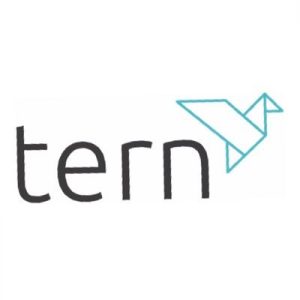Privileged Access Management (PAM) is fundamental to cybersecurity strategies, monitoring and protecting privileged accounts that have the authority to make significant changes within IT environments. It plays a crucial role in safeguarding against internal and external security threats. Effective PAM strategies encompass enforcing the principle of least privilege, session management, password vaulting, and multi-factor authentication, all aimed at minimising the risk of unauthorised access and improving compliance with security regulations. PAM must be adaptable and integrate with Identity Access Management (IAM) for comprehensive access governance, tackling real-world applications and challenges, including emergency access scenarios, evolving IT infrastructures, and securing stakeholder buy-in for successful implementation.
PAM oversees privileged accounts, which hold the power to make sweeping changes, access sensitive data, and control critical systems. This requires stringent oversight. Effective management involves a sophisticated blend of control, visibility, and auditing to ensure only the right entities have the necessary elevated privileges, and only when needed. PAM acts as a shield against both external threats and internal oversights, guarding against the inherent risks privileged accounts pose.
Privileged accounts come in many forms, each carrying its own set of keys to various parts of an IT environment. From domain administrators to service accounts that hum quietly behind the scenes, these accounts represent a spectrum of privileged access that must be responsibly utilised and robustly protected. Admin accounts, for instance, wield extensive control, making them a primary target for attackers. Securing these accounts is not just about safeguarding the system’s integrity but also about protecting the data and operations that hinge on them.
Service accounts are the silent workhorses of the IT world, performing automated tasks that range from routine maintenance to complex operational workflows. Their machine-driven nature and extensive access render them potential security risks, particularly if not managed rigorously. Managing these accounts involves ensuring synchronisation of credentials and access rights across the entire system, preventing security gaps that could be exploited. Application accounts, critical for communication between applications and databases, must be secured with robust credential management practices to prevent disruptions and security breaches.
IoT devices introduce a new dimension to privileged access management. These devices often operate with privileges that must be managed with as much caution as traditional IT systems. The sheer number of these devices, coupled with the diverse environments they operate in, presents a profound challenge for PAM. Many IoT devices are designed with convenience in mind, often at the expense of robust security features, making them particularly vulnerable. PAM solutions need to adapt to the distinct needs of IoT devices, ensuring their effective security, monitoring, and control.
Remote access has emerged as a cornerstone of business operations in today’s globally connected era. PAM solutions act as secure access gateways, managing remote traffic and eliminating the vulnerabilities of direct connections. Modern PAM systems offer features such as web-based remote sessions that rely on HTML 5 compatible browsers, a culture of employee education on strong passwords, and the use of multi-factor authentication, forming a robust strategy for secure systems and mitigating security risks.
Three fundamental pillars underpin PAM security: reinforcement of the principle of least privilege, management of privileged sessions, and incorporation of multi-factor authentication. These pillars uphold a balance between operational needs and cybersecurity measures required to protect critical systems. As Zero Trust policies, necessitating constant identity and device verification, gain traction, PAM security has become crucial for an organisation’s security stance. The principle of least privilege restricts access rights to the bare minimum necessary for authorised activities, reducing the attack surface and minimising the risk of unauthorised access.
Session management is critical, providing real-time oversight and the ability to address suspicious activities as they occur. This includes recording privileged sessions, excluding passwords, which is vital for both security and compliance purposes. Multi-factor authentication (MFA) bolsters PAM by requiring multiple forms of verification, ensuring that privileged user identities are authenticated accurately and reliably.
Thwarting credential theft is a key objective of PAM. By safeguarding privileged credentials in a secure vault and managing password rotation, PAM systems ensure that authentication for privileged accounts is properly conducted. Integrating PAM with IAM enhances an organisation’s defences by unifying governance processes, streamlining the request, provision, and attestation for both privileged and standard user access.
Perfecting a PAM strategy demands commitment to best practices, including adopting a comprehensive privilege management policy, using automation to streamline access protocols and manage password vaults, and regularly updating the policy to maintain best practices and compliance. Regular security audits are also critical, helping to assess effectiveness, identify improvement areas, and track user activity for potential breaches and audit evidence.
Implementing PAM comes with challenges, such as integrating PAM systems with legacy infrastructure and securing stakeholder buy-in. Overcoming resistance to change and lack of awareness within the organisation is crucial for the success of PAM implementations. PAM plays a crucial role in fostering audit-friendly environments that enhance an organisation’s risk management strategy. Effective PAM solutions come equipped with extensive session recording tools, capturing command-line activities and video in a searchable format, invaluable for audit and compliance requirements.
To navigate the complex digital landscape, organisations must wield Privileged Access Management (PAM) as a strategic shield, protecting their most valuable digital assets. From the granular control of admin accounts to the specialised management of IoT devices, PAM stands as the guardian against cyber threats. By integrating PAM with IAM, enforcing the principle of least privilege, and optimising session management, companies can solidify their defences while meeting stringent compliance mandates. Armed with the knowledge of PAM’s multifaceted capabilities, organisations are better equipped to secure their digital fortresses in this ever-evolving cyber era.
Tern plc (LON:TERN) backs exciting, high growth IoT innovators in Europe. They provide support and create a genuinely collaborative environment for talented, well-motivated teams. Device Authority is focused on securing connected device ecosystems and is recognized as the global leader in Device Identity Lifecycle Management and Identity and Access Management (IAM) for the Internet of Things (IoT).


